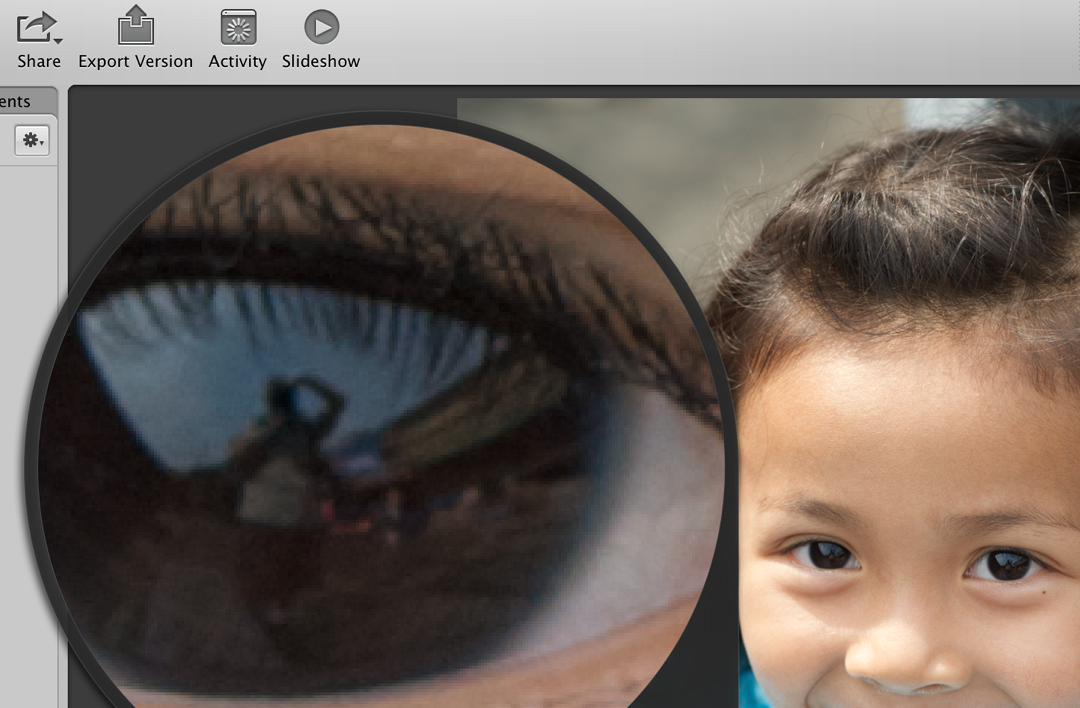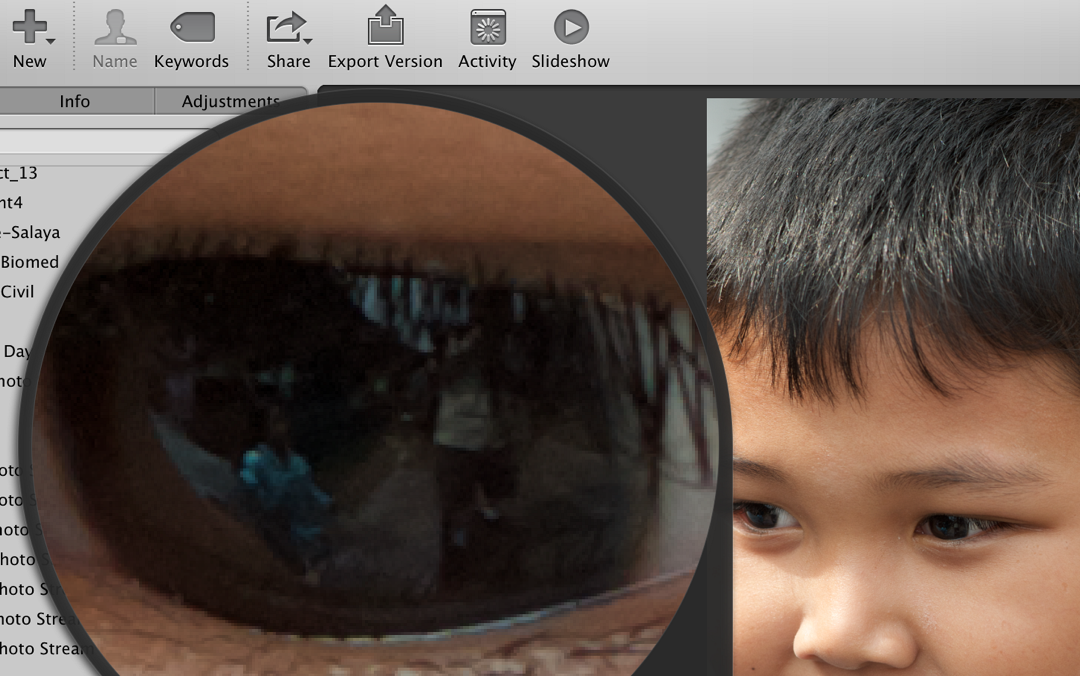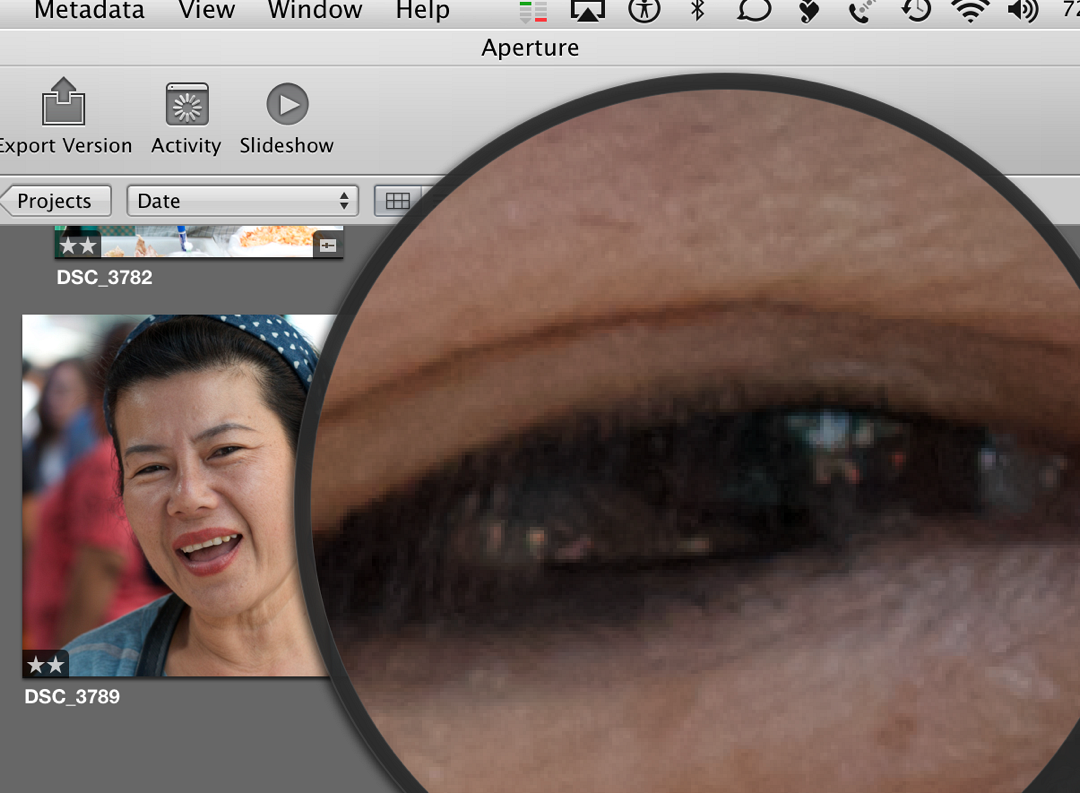Cassandra: Identifying Persons and Locations from Eye Reflections in a Photograph

AMITIAE - Tuesday 31 December 2013
|
Cassandra: Identifying Persons and Locations from Eye Reflections in a Photograph |
 |
|
|
By Graham K. Rogers
Jenkins and Kerr used a Hassleblad H2D-39. This produces high quality images with its 39 million pixel sensor. Hasselblad cameras are not cheap, nor are there many security cameras made by the Swedish company. The H2-series has now been superseded by the H5-series.
Although the quality (picture right - 61 x 61 pixels) of the iPhone output is nowhere near that of the Nikon (and certainly not the Hasselblad), there are elements within the image that might be identifiable in terms of location were the technology to be improved. However, with my blue eyes, information seems to have less definition than when photographs of those with brown eyes (see above and below) are used. Looking at a number of the best closeup shots, I enlarged them with the loupe (a magnifying tool) in Aperture and took screen shots. I set the loupe at 400% magnification. The results were reasonable for this DSLR camera: it is feasible that even without the far higher high quality output of the Hasselblad, there may be some identification possible. Of course, most of the images show me - as photographer - but there is also some other information (figures and locations), depending on where the subject is looking.

Me in image center; bystanders and station facade to the right

Me right of center; bystander to the left; station and train behind

Busy street environment
Graham K. Rogers teaches at the Faculty of Engineering, Mahidol University in Thailand where he is also Assistant Dean. He wrote in the Bangkok Post, Database supplement on IT subjects. For the last seven years of Database he wrote a column on Apple and Macs. |
|

For further information, e-mail to

|

|